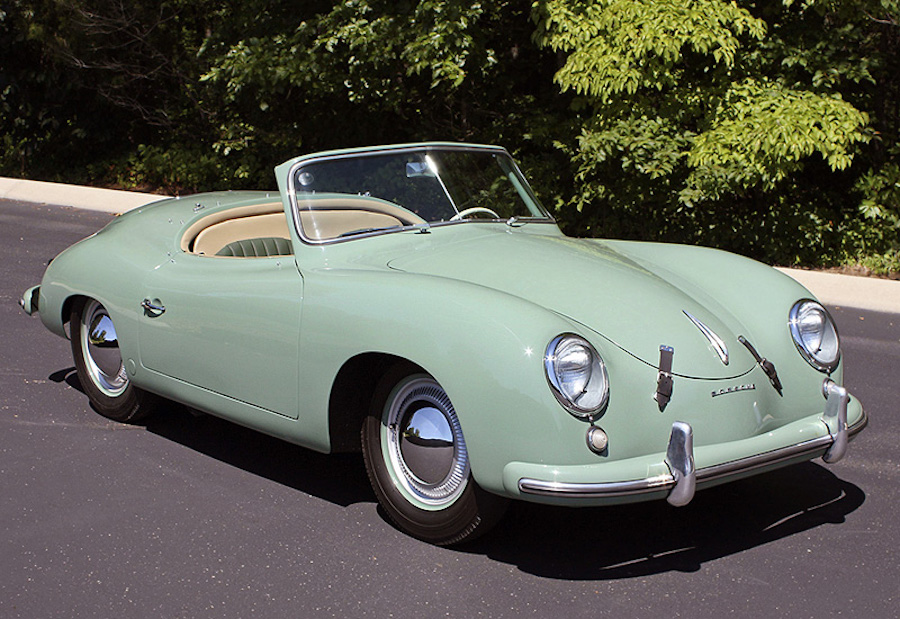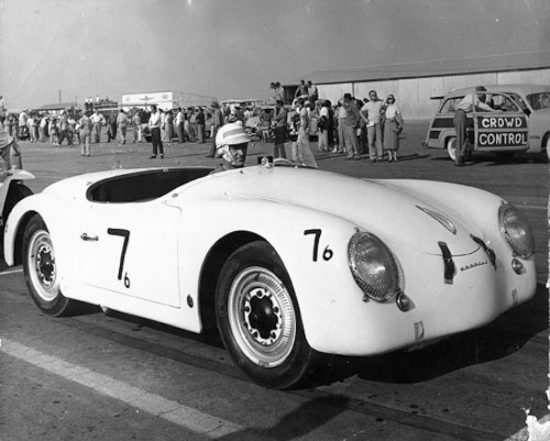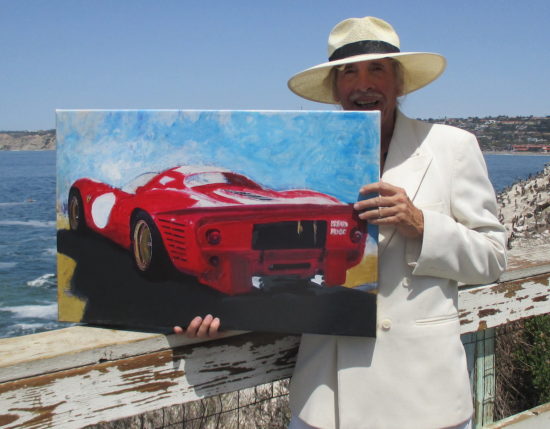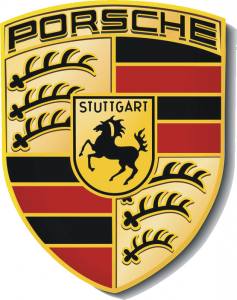Reaching into the My Car Quest Wayback Machine I came up with this interesting story from February 2017. I hope you all enjoy it again, or for the first time
Mike Gulett, Editor.
by Wallace Wyss –
He’s gone now, but I have the feeling if I got to know him better, I would’ve called him “Maxie.” An Austrian who moved to the U.S before the war, he was very instrumental in the acceptance of European sports cars in America. Originally he arrived here to sell costume jewelry but soon fell in love with the idea of convincing European car companies he could sell their cars in America.
He first linked up with Jaguar, and even built a famous Frank Lloyd Wright designed showroom in New York City but then realized it was the cars built by fellow Austrians, the Porsche family, that were more his style. As early as 1950, he met with Ferry Porsche and made his pitch.
Ferry Porsche told Max Hoffman he envisioned the market for Porsche cars to be knowledgeable automobile enthusiasts who recognized quality, luxury and performance. But Porsche was willing to concede that there was, as Hoffman said, a market for a double duty car that could be used as a Grand Tourer on vacations or as a daily driver.
Porsche also was charging two to three times the price of a Chevy so both knew that Porsche fans had to be bucks up.
So Hoffman had to cool his heels while Porsche sold touring cars first until they had time to design a car that could be a weekend racer for his customers…
Two Independent Efforts
Fortunately there were others who felt like Hoffman, that there ought to be racing Porsches. Hoffman monitored their efforts and took out his wallet when he saw something promising come from them. One was a wealthy VW dealer in Germany who commissioned some tube framed mid-engined Porsches called Glockers, the first one built in 1950 using a Porsche 1100cc engine but a hodgepodge of used VW and custom built parts.
That first Glockler, #1 did well in its class in racing in 1950, ’51 and ’52. The second Glockler used a Porsche Type 502 1488 cc motor and raced alongside two Porsche factory-built Gmünd coupes in late 1951, showing it was the equal of the factory cars. The third Glockler was the first built atop a real Porsche chassis, chassis no 10447, and was more civilized than the first two. Porsche gave their permission to put the Porsche name on the car. And the Glocklers weren’t the only ones who wanted a racing Porsche.
Also stepping up to the plate in Germany Heinrich Sauter, who built his own steel-bodied roadster that looks an awful lot like the production Porsche 540 roadster. He pepped up the engine to 1500 cc. Porsche finally saw that these race cars had merit and decided to make a new model that would serve the needs of racers, and use their new engine, a 1500cc flat four.
Hoffman bought examples of each and raced them in the US though at this writing, I am unsure if he actually piloted the cars himself. He began to lean on Porsche to produce some kind of lightweight car that could be used as a weekend racer.
Porsche didn’t make its own bodywork after they moved part and parcel to Germany, they parted it all out and in 1950 they had signed with a firm called Glaser-Heuer to build 200 cabriolets. But the cabs were still heavy, with full padded tops, not the kind of car Hoffman insisted they must have for the American market.
Who designed the Porsche America?
Now here’s where the history gets convoluted. In Brian Long’s book, “The Book of the Porsche 356”, he claims, for an open car design that could double as a weekend racer by virtue of a removable windshield, Hoffman went to an American magazine illustrator, Coby Whitmore, for a design for a sports car. But a historian who has his own America roadster website never refers to Whitmore, who was, after all, just an illustrator, not a designer. The design was called “Sport – Roadster” and “Typ 540” and was to be marketed in the US as the “Porsche Competition Roadster.”
But somehow they were called the “America” roadster (Porsche America Roadster) later maybe because all but one of the 16 built went to the U.S.
Competition Motors had also published a brochure in 1953 in which they referred to the engine series available for Porsche Coupes and Cabriolets as the “America Series” and the “Super Series”.
Others credit Porsche’s usual designer, Erwin Komenda, with the Porsche America Roadster design, proof being a drawing labeled 356.00.320 for a production roadster. Heuer was already making some Cabriolet chassis but because America roadster production was going on at the same time, this confuses historians over which cars were which.
Porsche themselves had a hard time sorting it out, writing one owner that, from ’50-’62 Heuer sent them 36 cabriolet bodies and 87 Roadster bodies. Most experts agree that 20 aluminum-bodied America bodies were ordered but by the time they got to 17 built they realized it was a dog, slow selling, and losing money because of the alloy body so they had the very last one built in steel.
Those who want to pursue this subject further can find the 356 Registry magazine Vol 27 No. 3 and 5, that covers the model. Confusing the research is that poor Heuer must have low-balled their bid and they went broke fulfilling the order. The irony is, by the time Porsche decided to see how they could lower the costs, they had already met with Hoffman and decided to build one more America as a steel-bodied car in order to see if they could cut production costs.
They built that car, but it no longer had a removable windscreen. Meanwhile something else happened to sink the America. Porsche had decided to make a lighter weight roadster with a removable windscreen and side curtains instead of glass windows. That was the Speedster. The Speedster would be marketed in America for $3000, about $1600 less than the America. Hoffman by this time was Porsche’s distributor in America so he was all for this, not shedding a tear for the dropped America model. So it is that the 540 America was quickly forgotten in the rush to get a Speedster. But that is not to say the America wasn’t key to Porsche’s history. By winning races in America, it had alerted sports car fans that a new kind of Porsche was available – one with racing potential.
That last one, the one with the fixed windscreen, was found and restored by Stanley Gold, a world class Porsche collector who, by the way, built his career as financial advisor to the Disney company. His light green car is seen at many a car event.
We could call the America roadster “Maxie’s One Goof” but, hey, if it hadn’t been for that, there wouldn’t have been a Speedster.
Let us know what you think in the Comments.
THE AUTHOR Wallace Wyss comments on cars weekly on Autotalk a show broadcast from KUCR FM, Riverside.







👍👍👍
interesting story by WALLACE.
Wallace was right Max Hoffman was instrumental in several European Sport car manufactures entering the US .
Before the Glocklers, the American ROADSTER, the Speedster, and the Spider came the Sauter. A Porsche that would change Porsche.
Heinrich Sauter, who raced Porsches found them to be to heavy and underpowered. He bought chassis 10359 and had Erwin Komenda, from Porsche design team, design with the advice of Max Hoffman the Sauter Porsche. The production of the body was carried out by Hans Klenk. This Porsche was the prototype for the Porsche American Roadster. After the delivery to Sauter the car was taken to Nurburgring for testing by the factory.The car first officially
raced at the Eifel Races on June3, 1951.
The car was sent by to the factory and loaned to noted race driver, Francois Picard for the 1052 season where he won 6 First in Class wins. This helped catapult Porsche into the international racing spotlight. I now own this car.